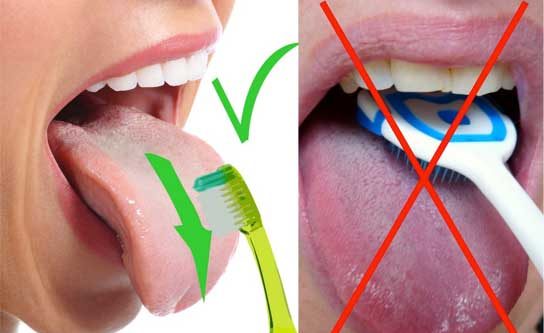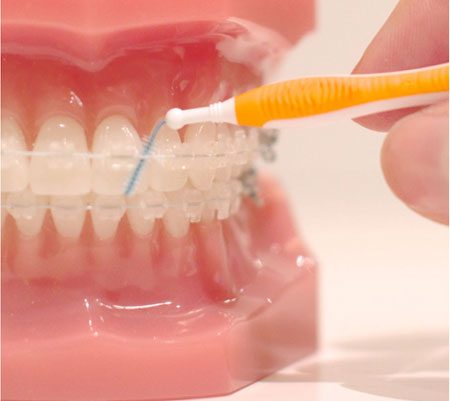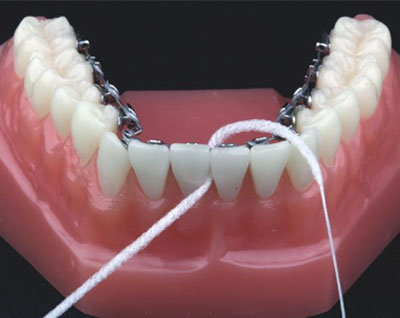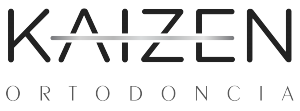Table of contents
Read on and we will clear up your doubts:
1. Toothbrush:
a) Choice of toothbrush:
To be able to reach all the corners of your mouth and remove plaque, dentists recommend using a small-headed toothbrush (2 – 2.5 cm), with medium hard or soft bristles.
If you wear fixed braces, use a special orthodontic brush with bristles cut in a “V” shape, i.e. shorter on the inside so that you can brush well above and below the brackets.
You can also use an electric toothbrush with a rounded brush head that will help you with hygiene, although you should bear in mind that:
- The brush vibrates, so you have to leave it on each tooth for a few seconds in order to take advantage of the rotational movement.
- The bristles tend to get caught in the fixed appliance and you have to change the brush head more frequently. On the faces where you don’t wear fixed braces, you will notice how soft your teeth become when you use the electric toothbrush.
- We recommend electric toothbrushes with a timer to control the brushing time and those with pressure sensors, which are very useful as they warn you if you are applying too much force.
Our recommended toothbrushes:
Vitis Access

Lacer Small Brush Head

GUM TECHNIQUE PRO 528

GUM 124 ORTHO

Use of the toothbrush:
- Open your mouth to brush your teeth from top to bottom, because if you brush with your teeth together you will leave areas of your teeth unbrushed.
- Mentally divide your mouth into 4 areas:
The outside of the teeth: If you are right-handed you can start with the molars on the right side in the area that faces the cheeks from back to front and continue towards the back of the other side, then down clockwise.
The outside of the teeth: If you are right-handed you can start with the molars on the right side in the area that faces the cheeks from back to front and continue towards the back of the other side, then down clockwise.
The inner side: Continue along the inside of the teeth, when you reach the front where the mouth is narrower, place the brush vertically to clean the teeth one at a time making sure to reach the gum.

The inner side: Continue along the inside of the teeth, when you reach the front where the mouth is narrower, place the brush vertically to clean the teeth one at a time making sure to reach the gum.

The chewing part of the molars: Making circular movements to make sure you reach the deepest part of the teeth.

The tongue: many people find it annoying to brush their tongue, the trick is to stick out your tongue as if you were teasing the mirror instead of bringing the brush inwards which gives you more sensitivity.

For brushing, tilt your toothbrush 45º towards the teeth and make short, gentle strokes in circles, you can also use vertical sweeping strokes from the gum to the teeth (from PINK to WHITE), do not use horizontal strokes which make the food more impacted between the teeth.
Pay special attention to the posterior area of the last molars, the inner area of the teeth (in contact with the tongue) and the junction between teeth and gums (both inside and outside). If you have implants or porcelain metal crowns, you will need to take special care at the junction between the prosthesis and the gum.
The toothbrush should be changed every 3 months, i.e. every change of season to make it easier to remember (spring, summer, autumn, winter).

2. Interproximal brush:
If you wear fixed orthodontics (both on the outside and on the inside of your teeth, i.e. Incognito lingual orthodontics) this brush is essential. Use it to clean between the teeth and the arch so that the area between the teeth is well cleaned.
It is essential that you use this brush every time you brush your teeth, yes, every time! Get used to using it every time because it doesn’t take so long (a few seconds) and it will help you to have healthier gums and a fresher taste and smell in your mouth.

If you wear aligners it is not necessary to use interproximal brushes, unless you are missing teeth or your periodontist has told you to do so. We prefer that you use “superfloss” which is a floss that comes with a “sponge” and helps you clean without pushing on the gum, because sometimes the pressure of the brush itself can make the space bigger.
The size of interproximal brushes is standardised and the design of the handles depends on the brand. You can find them straight and bent with a 90º angle. My recommendation is to buy them straight and if you need to bend them in any area, it is very easy to do so by applying a little pressure with your finger.
If you use these brushes every day, twice a day, they shouldn’t last more than 1 month. In other words, they should be changed more frequently than your usual toothbrush.
3. Silk thread:
If you are wearing aligners you can comfortably pass the silk thread, if you are wearing fixed orthodontics (vestibular or lingual), we recommend using “superfloss or proxyfloss” is a thread that has 3 parts:

- The beginning of the floss has a hard “fishing line” type area: this will help you to pass the floss from the outside (the area that faces the cheeks) to the inside, the side of the teeth that faces the tongue.
- Another intermediate area that absorbs like a sponge the remains of dental plaque that you have between the teeth and is the most active part, you will pass it first over one tooth and then over the adjacent one using movements from the inside out and from top to bottom, think of drying your back with a towel… as the movement is the same.
- The final area which is a normal floss: with this part you can gently enter under the gum and clean the pockets that have been created by inflammation, i.e. the gum swells, grows and forms a kind of pocket where you can’t see part of the tooth and bacteria and dental plaque accumulate. In this area you will use the floss to keep the gum clean and not inflamed.
This floss is very useful to pass it in difficult areas such as under the retention lingual arch that is used at the end of the treatment to keep the gums healthy, or when you have small black triangles that you want to keep clean but without them increasing in size.
The superfloss or proxysoft is marketed by 2 brands ORAL B and GUM that you will find in the Pharmacy.

I hope you have found it useful to choose your toothbrush and have an easy and clear method to brush your teeth with fixed or removable orthodontics such as Invisalign.
Would you like to know what type of toothpaste to use? With fluoride or without fluoride? What to look for when choosing a good toothpaste in the supermarket? Do mouthwashes with alcohol or without alcohol clean better?
In the next article I will clarify these and other doubts, see you soon!



